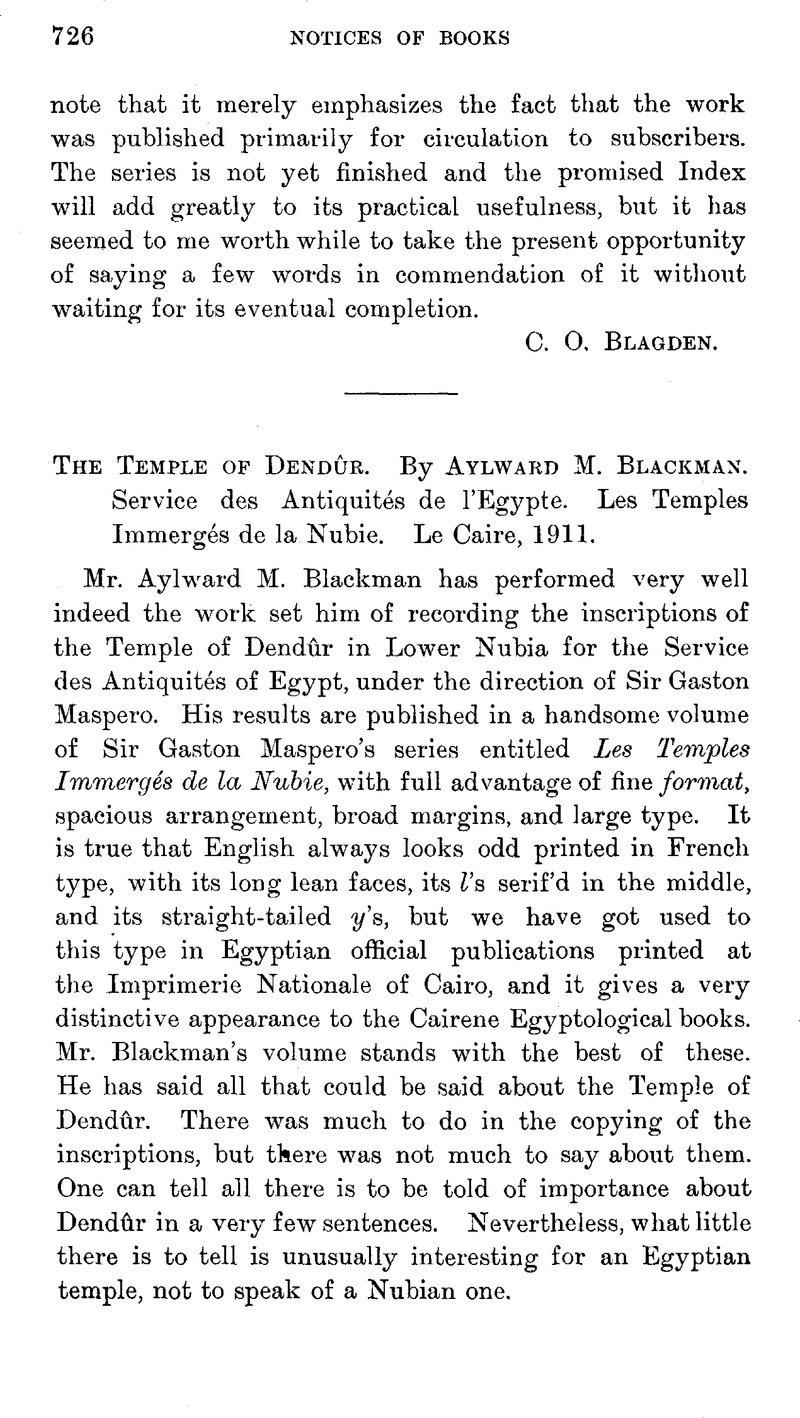No CrossRef data available.
Published online by Cambridge University Press: 15 March 2011

1 Commenting on a title given to one of these “sheykhs”, which would appear to describe him as “the Dweller in the Underworld”, a dead person or Osiris of power in Hades, Mr. Blackman compares the expression iḫwân-na min taḥt el-arḍ, “our brothers beneath the earth,” which he says is often used by the fellaḥîn in speaking of sheykhs (p. 83, n. 4). But I do not see that in the mouth of a modern fellaḥ this need mean anything more than it would mean in that of a modern European; it simply denotes those who are buried in the cemetery. The old Nubian regarded Pihor as a very potent Osiris and god of the Underworld; there can be nothing of this in the very natural expression iḫwân-na min taḥt el-arḍ.